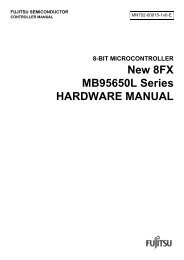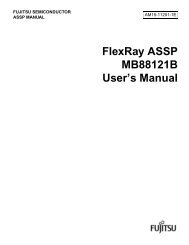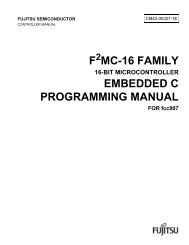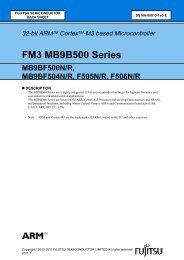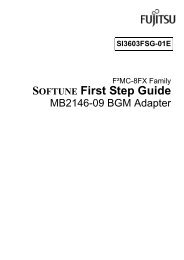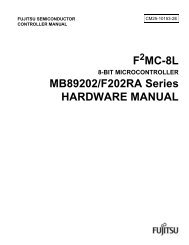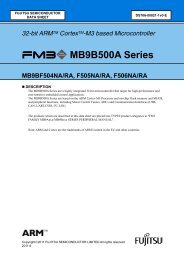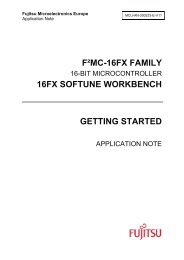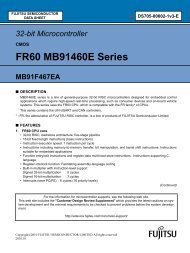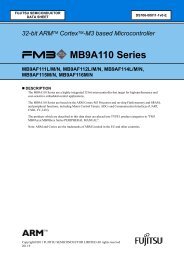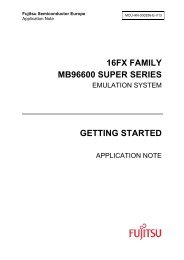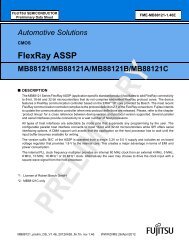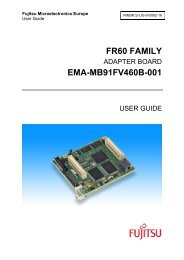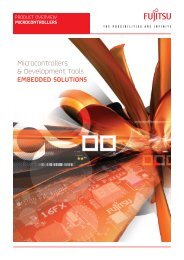J-Link / J-Trace User Guide (UM08001) - Microcontrollers
J-Link / J-Trace User Guide (UM08001) - Microcontrollers
J-Link / J-Trace User Guide (UM08001) - Microcontrollers
Create successful ePaper yourself
Turn your PDF publications into a flip-book with our unique Google optimized e-Paper software.
10.2 Terminating the trace signal<br />
To terminate the trace signal, you can choose between three termination options:<br />
• Matched impedance<br />
• Series (source) termination<br />
• DC parallel termination.<br />
Matched impedance<br />
Where available, the best termination scheme is to have the ASIC manufacturer<br />
match the output impedance of the driver to the impedance of the PCB track on your<br />
board. This produces the best possible signal.<br />
Series (source) termination<br />
This method requires a resistor fitted in series with signal. The resistor value plus the<br />
output impedance of the driver must be equal to the PCB track impedance.<br />
DC parallel termination<br />
This requires either a single resistor to ground, or a pull-up/pull-down combination of<br />
resistors (Thevenin termination), fitted at the end of each signal and as close as possible<br />
to the JTAG+<strong>Trace</strong> connector. If a single resistor is used, its value must be set<br />
equal to the PCB track impedance. If the pull-up/pull-down combination is used, their<br />
resistance values must be selected so that their parallel combination equals the PCB<br />
track impedance.<br />
Caution:<br />
At lower frequencies, parallel termination requires considerably more drive capability<br />
from the ASIC than series termination and so, in practice, DC parallel termination is<br />
rarely used.<br />
10.2.1 Rules for series terminators<br />
Series (source) termination is the most commonly used method. The basic rules are:<br />
1. The series resistor must be placed as close as possible to the ASIC pin (less than<br />
0.5 inches).<br />
2. The value of the resistor must equal the impedance of the track minus the output<br />
impedance of the output driver. So for example, a 50 PCB track driven by an output<br />
with a 17 impedance, requires a resistor value of 33.<br />
3. A source terminated signal is only valid at the end of the signal path. At any point<br />
between the source and the end of the track, the signal appears distorted<br />
because of reflections. Any device connected between the source and the end of<br />
the signal path therefore sees the distorted signal and might not operate correctly.<br />
Care must be taken not to connect devices in this way, unless the distortion<br />
does not affect device operation.<br />
J-<strong>Link</strong> / J-<strong>Trace</strong> (<strong>UM08001</strong>) © 2004-2010 SEGGER Microcontroller GmbH & Co. KG<br />
201



